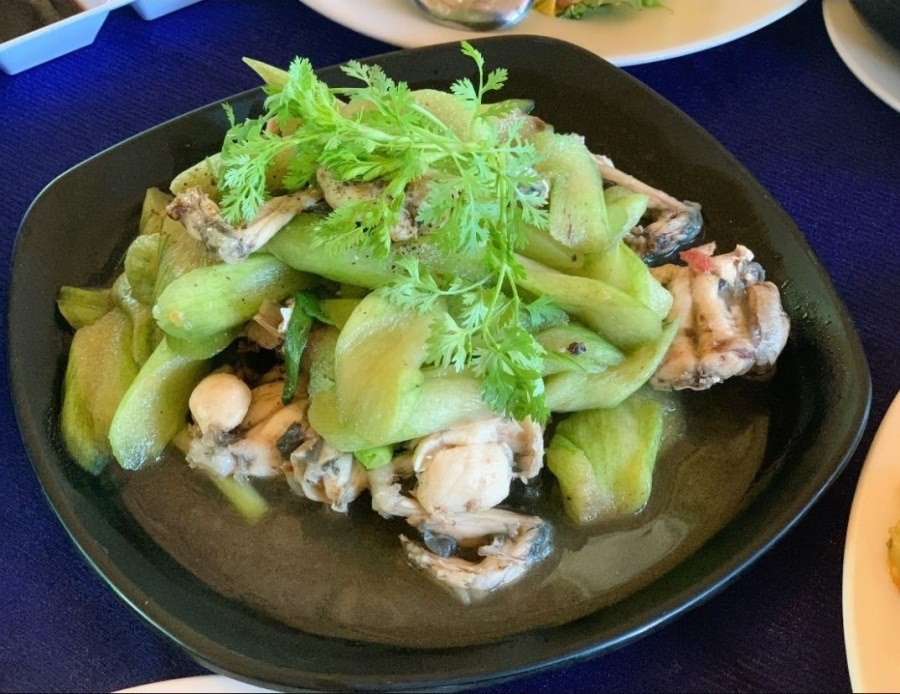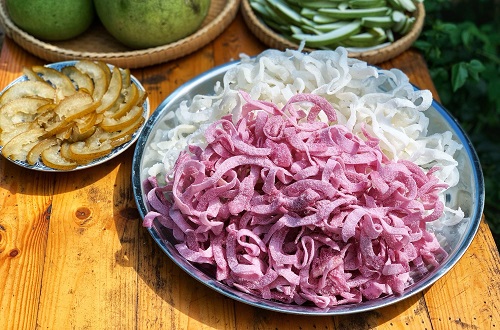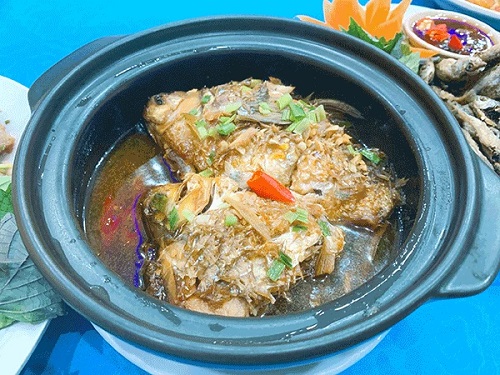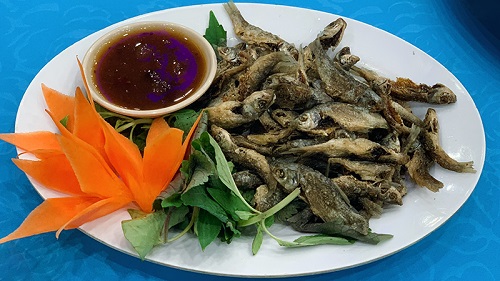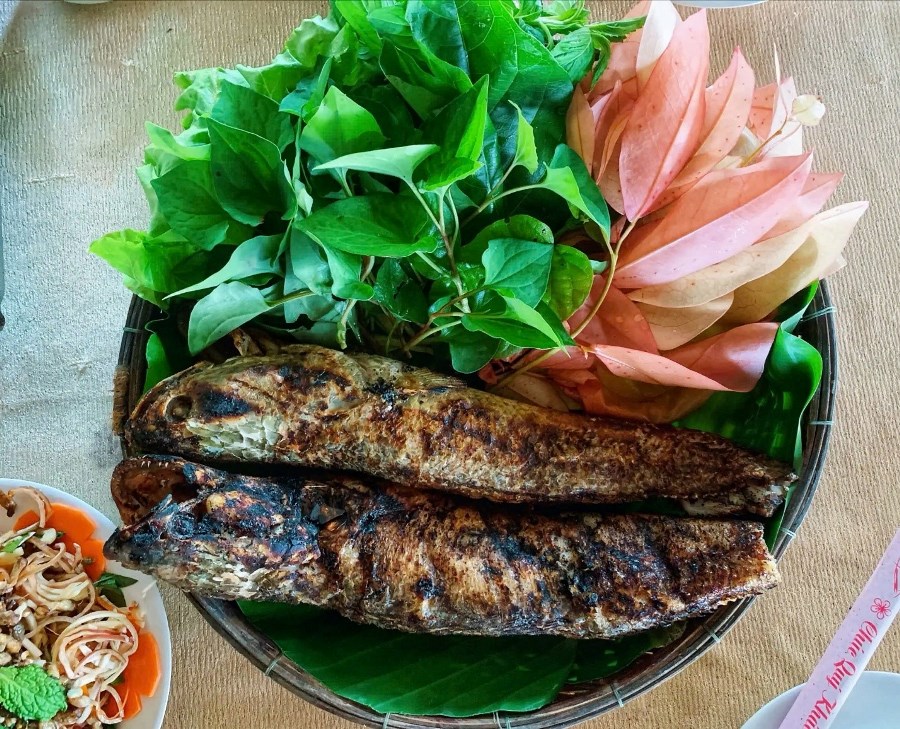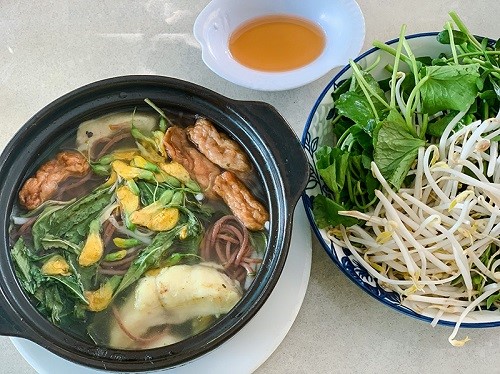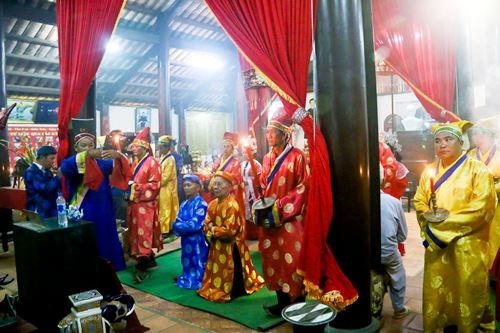
Worshiped figures
Like any other communal houses in Southern Vietnam, Binh Thuy Communal House is where the Village God is worshiped. According to Nguyen Duy Hinh, "Village God, the guardian of Chinese feudalism, has been adopted in our country since the Tang Dynasty. Later, this practice continued to thrive under Vietnamese dynasties” (1). From then on, Village God worship has been integrated into the existing local beliefs because he was considered as a guardian of people’s lives. Later on, apart from Village God, people with meritorious services were also worshiped and commemorated in the reclaiming and protesting the country against the aggressors. Therefore, “... this Vietnamese custom is quite different from Chinese one (...) Village God worship was formed and developed on the basis of respect and gratitude to ancestors whose were merit in fighting against the enemies, protecting the country and the people, helping them during epidemics and natural disasters.” (2)
Therefore, the Village God worship in Vietnam is believed: “to embody the villages and their permanence. Village God symbolizes the village's history, customs, morals, laws, and hopes. Additionally, he is of the transcendent authority and invisible connection that forms a well-organized community” (3). The Village God in Binh Thuy Communal House is entitled "the God of generosity, righteousness and eternity”. He is believed to be “the guardian of the community. He has been in the communal house, witnessed people’s lives and the village affairs, protected all the villagers and blessed them with peace and prosperity” (4).
Festival spaces
Binh Thuy Communal House is also known as Long Tuyen Ancient Shrine because local people normally name a communal house after the village. The village of Binh Thuy had existed before they called it Long Tuyen. It was one of the ancient villages in the Mekong River Delta which formerly belonged to Tran Giang District. The place was the cradle of culture and the sacred land with extraordinary people of former Tran Giang.
It was written that in 1908, under the reign of King Duy Tan II, during the meeting with the village representatives and seniors, Prefect Nguyen Duc Nhuan (at Nga Tu Lon) and Town Chairman Le Van Noan (at Nga Tu Be) proposed to rename Binh Thuy to Long Tuyen Village. They interpreted Binh Thuy River flowing through the village like a winding dragon. Its mouth appeared wide open holding a ball which was Linh Islet (Son Islet). The upper limbs were Nga Tu Lon and Nga Tu Be ditches flowing in opposite directions. From afar, Mieu Ong Ditch lay across from Cai Tac Ditch like two lower limbs. Besides, a lot of tributaries of those four were in the shape of the dragon claws. The dragon meandered softly with its tail in Giai Xuan Village. The dragon eyes were spotted to be Binh Thuy Communal House and Nam Nha Pagoda. The river rippled gently in the sunlight all year round as if countless dragon scales sparkled in the luxuriant forest. Eventually, their proposal was unanimously approved. Since then, the village was renamed Long Tuyen. Additionally, the communal house of Binh Thuy Village was also called Long Tuyen. The other names remained unchanged (5).

Petitioning Sac Than Ritual Photo: Duy Khoi
The Communal House is located on the Hau Riverbank, 5 kilometers away from downtown Can Tho in the northwest. At the foot of Binh Thuy Bridge stands a three-entrance gate with the name of Long Tuyen Ancient Shrine. On the way to the Communal House, there is a bas-relief with a dragon at the front and a unicorn at the back between two gates. The campus covers over 4,000 square meters. The communal house was built with a horizontal I-shaped structure facing East. The tiled roof is supported by 6 rows of sturdy round columns. Due to the structure of “thuong lau, ha hien” (a two-layer roof), the ceiling joists are well-structured in line with the five-room architecture and the corridor on either side.
A statue of a dragon couple fighting for a ball is placed along the roof. Besides, multiple statues of deities, unicorns, mascots, and a wide variety of decorations are installed around the attics. The house is on a high, dry, and ventilated place. On the crossbar under the roof, there is a range of horizontal lacquered boards, couplets, and curtains present from the front to the back of the house. The sophisticated and glittering patterns standing out on the black or crimson red background embellish the splendid-yet-solemn communal house.
In the main hall stand two statues of Ong Thien and Ong Ac between two rows of ancient weapons. There is an over-100-year-old set of beautiful large bronze “dinh” (large-sized incense burners) solemnly placed between two upright bronze cranes in front of the altar. Noticeably, peonies are gracefully engraved on the two columns of the main hall and the other two at the back are adorned with the large dragon couple winding. The themes of the interior and exterior decorations also come in subtle colors and delicate shapes.
Moreover, Vietnamese heroes and historical figures such as Tran Hung Dao, Phan Boi Chau, Bui Huu Nghia, etc. are worshiped in the communal house (6). With the cultural values preserved, Binh Thuy Communal House was recognized as a national architectural and artistic relic by the Ministry of Culture and Information on September 5th, 1989.
Rituals
On the 11th of lunar April, the day before the official Ky Yen Thuong Dien, the communal house’s representatives set up and perform the following opening rituals: Three-entrance gate opening, Te Dat, Cung Tien, and Trinh Sanh. Ong Tu is responsible for door opening on time and in turn: the doors should be open from left to right, then the back door, the side door, and the front door to pray to Gods for a successful festival. Te Dat Ritual takes place at the communal house to inform the Earth God of the upcoming ceremonies in the hope of his witness and bless. In Cung Tien Ritual, villagers will present offerings to report on the festival hosting. Trinh Sanh Ritual is performed at Than Nong Shrine on the campus of the communal house with a set of three offerings to pray for the country and the village's prosperity and well-being of people.
The first ritual, Thinh Sac Than, is at 2 a.m. After that, Than Nong Ritual is performed in the shrine at 5 a.m. At noon, the ritual of Sac Than Cloth Exchanging is made. This ritual serves two purposes. One is to check on Sac Than and the other is to offer local people to see Sac Than that King Tu Duc bestowed on the communal house. It is followed by the two rituals of Xay Chau and Dai Boi. The former is practiced in harmony and balance between Chau Van and Chau Vo. The latter is performed by artists in the “Boi” troupe. The ritual of Xay Chau is reappeared through their performances with traditional costumes, dance moves, and folk songs.
Next morning, Te Ban Ritual is held in the main hall. During the meeting, organizers determine offerings and assign tasks. Tuc Yet Ritual is a ceremonial welcome of gods at 2 a.m. on the 14th of lunar April. The eulogy will be burned after the organizers finish reading it. The next morning, the most important ritual, Chanh Te, takes place at 2 a.m. to express thanks to Gods and worship Tien Hien, Hau Hien and pray for the martyrs. Next ritual is Ton Vuong. While “Tuong” show is ongoing outdoors, the offerings are brought on stage and the “Boi” troupe performs Ton Vuong Ritual in the main hall. After that, Son Quan Ritual at Son Quan Shrine, or Ong Ho Shrine, is made to show villagers’ great respect for Gods and wish a peaceful life.
The offerings of each ritual are customarily followed due to traditions and deep meanings passed down from generation to generation. In addition to rituals and Boi performances in Ky Yen Festival, there is a sticky rice cooking contest, local cuisine fairs, and folk games, which attract a large number of participants.
Ky Yen Festival in Binh Thuy Communal House is convincing proof of the settlement of Vietnamese people on this land, the featured culture of wet rice, and the tradition of gratitude. Not only does the festival enrich people’s spiritual lives, but it also preserves and transmits cultural values. Furthermore, it meets the spiritual and recreational needs of local people and unites the community (7).
Ky Yen Festival in Binh Thuy Communal House was recognized as a National Intangible Cultural Heritage by the Ministry of Culture, Sports, and Tourism in 2018.
-----------------
(1) Nguyen Duy Hinh. (1996). Tin Nguong Thanh Hoang Vietnam (pp. 60). Hanoi Social Sciences Publishing House.
(2) Nguyen Huu Hieu. (2004). Tim Hieu Van Hoa Tam Linh Nam Bo (pp. 33). Tre Publishing House.
(3) Hoi Va Dap Ve Van Hoa Vietnam. (pp.128). (1998). Hanoi National Culture Publishing House.
(4) Huynh Ngoc Trang, Truong Ngoc Tuong, Ho Tuong. (1993) Dinh Nam Bo Tin Nguong Va Nghi Le (pp. 61). Ho Chi Minh City Publishing House.
(5) Pham Van Thuy. (6/21/2003). Lang Long Tuyen Can Tho. Bao Van Nghe (25).
(6) Can Tho Museum documents
(7) Duong Anh. Le Hoi Ky Yen Dình Binh Thuy. Retrieved 5/10/2021, from http://dsvh.gov.vn/le-hoi-ky-yen-dinh-binh-thuy-3141.
Source: Can Tho News - Translated by Diep Truong







